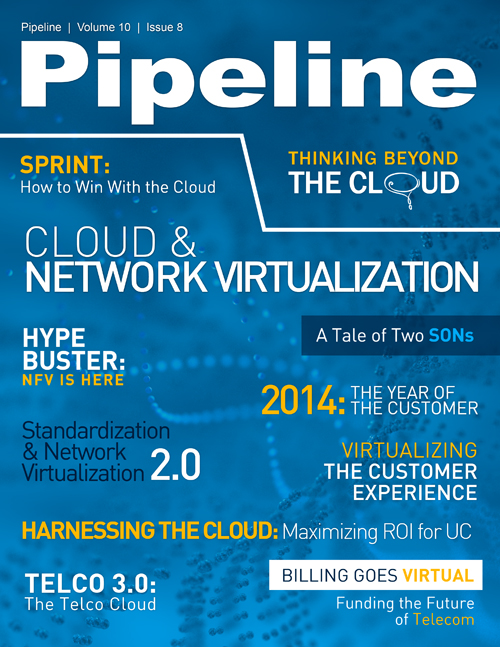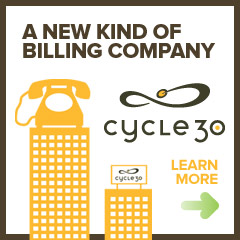Billing Goes Virtual
By: Jesse Cryderman

“Companies that don’t respond to this changing world will be left behind.”
David Pleasance, Principal, Deloitte Consulting
As the world turns to greet the dawn of a new year, the reality we welcome is increasingly virtual. We have entered the era of Everything-as-a-Service, an epoch increasingly defined by cloud computing. Many technical domains, from storage, to applications, to computing power, to platforms and even infrastructure are available as cloud services. This has been an exciting development for communications service providers (CSPs), as it offers promising paths to new revenue creation and cost reduction.
CSPs are now teleporting functions of the back-office to the cloud. Leveraging the advantages of the subscription economy and the dynamic scalability of the cloud, billing itself has gone virtual. Virtualized billing enables CSPs to turn up and scale new services without being held back by traditional operational constraints. Implementing cloud billing permits billing processes and costs to scale with business use, thereby lowering the barrier of entry into new revenue streams and reducing the cost of support systems. It also facilitates service provider organizations to focus on the true value of their services instead of nuts and bolts.
Virtualized billing isn’t being promoted as a replacement for the large-scale, post-paid billing systems of Tier 1 service providers (at least not yet); no one is suggesting that leading operators forklift their billing systems into the cloud. It is, however, a very attractive solution to a challenge that is front of mind for CSPs: business agility. Virtual billing enables CSPs to test, launch, and tweak new product domains at a lower cost and with reduced risk. It creates a framework for non-comms companies, such as retailers, to launch mobile virtual network operators (MVNOs) and mobile virtual network enablers (MVNEs). Further, cloud billing solutions that are derived from convergent billing suites have the ability to transform billing into a value-added function with functions such as dynamic pricing, direct-to-bill mobile payment, in-app purchasing, and in-game transactions.Cloud billing is big business
Virtualized billing solutions aren’t hype—cloud billing is a hot market worth billions. According to the latest data from Markets and Markets, the market reached $2.4 billion in 2013, and is expected to grow at an annual rate of nearly 32 percent until 2018. Compared with the overarching telecom operations management market, which is growing at just 3.76 percent according to TechNavio’s analysis, cloud billing is booming.
Pipeline interviewed leading vendors of telecom billing systems, and they unanimously agreed that offering a virtual billing solution is table stakes for BSS vendors. “We absolutely see it that way,” said Jim Dunlap, President, Cycle30. “Or, to put it another way, I would say that NOT having a cloud offering as a BSS vendor really limits you to “legacy style” billing, and there are very few operators today willing to knowingly migrate onto legacy technology systems."
North America and Asia Pacific are predicted to experience the largest growth in cloud billing revenue, according to Markets and Markets research, but the phenomena is not restricted to any one region or vertical. “We expect that over the next three to five years cloud billing will be adopted in most regions and industries,” said Sean Casey, Product Management Director, CSG International.
New Service Agility
For many businesses, the value proposition for cloud services is cost savings. While virtualized billing does offer cost savings, the chief advantage it offers CSPs is new service agility. Cloud billing offers “faster time to market for providers rolling out new products and services,” says Jim Dunlap.
“The major driving point of virtualization is not just cost savings,” commented James DeMarco, CTO, Redknee. “Virtualization must realize a strong business benefit for the CSP, for example, enabling rapid rollout of new services or elastic scaling of operations to empower the CSP to compete on the services themselves, rather than on mere IT efficiency.”
Supporting in-app purchasing and/or in-game transactions is one example where real-time cloud billing can create new revenue, especially if this function is combined with real-time incentives. Recent research indicates that, in mobile gaming, conversion rates for direct mobile billing are substantially higher than credit card payments—in some cases, ten times higher. “Mobile network operators are uniquely positioned to take advantage of their billing relationships with their consumers to enable them to do more in the connected world,” wrote Brian Shepherd, then an Amdocs division president, when Amdocs launched cloud-based direct-to-carrier mobile billing in February, 2012.





















